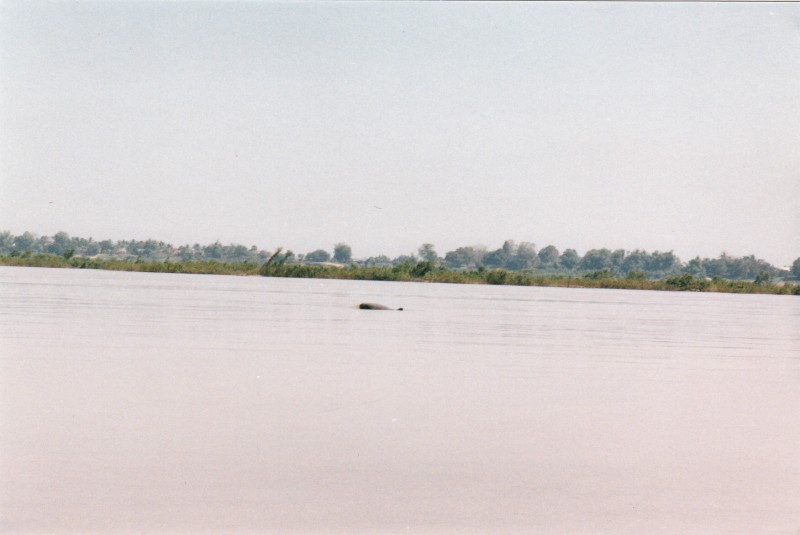[In January 2003 I accompanied an expedition that was conducting a survey of river dolphins on a stretch of the Mekong River in Cambodia. The expedition was led by Isabel Beasley, who was then a PhD student specializing on Orcaella brevirostris: also known as the ‘Irrawaddy Dolphin’ this species is found in many Asian river systems and deltas. The journal I kept during the expedition will appear on this site as a continuous series of posts. This is part 4 of the series.]
Altogether Isabel recognizes some seven or eight individual dolphins and she has even named some of them. Most of them have Cambodian names. ‘Clasico’ was caught near Phnom Penh; ‘Moi’ (‘one’ in Khmer) was the first one we saw; ‘Tri-fin’ is the one with the triangular fin; ‘Rags’ is another one in the Kampi pool, recognizable because of its ragged dorsal fin. ‘Tamasu’ is named after an area farther north. Most of them she has seen frequently and they are relatively distinctive – this is why she is able to identify them by sight. Clasico has an interesting story which I’ll come to later.
One of Isabel’s discoveries about Orcaella is related to its spitting behaviour. This behaviour was reported long ago, even by Anderson (of Orcaella fluminalis fame), but Isabel thinks that she knows why Orcaella spits. It is in order to herd its prey – that is, to direct shoals of fish in one direction or another. Another discovery is that orcaella uses its tail to hunt – that is, slaps fish with its tail, stunning them. They float to the surface. This was initially suggested to her by local fishermen, who said that they had seen dolphins doing this. She became aware of it because she repeatedly encountered a certain ‘thwack’ sound and then saw fish floating to the surface. Then a dolphin would come along and eat the fish. At first she thought that the sound might be related to echolocation, and this might also, somehow, account for the stunned fish. But then she decided that it resulted from an actual blow, from the fish’s tail. She thinks that this might be a part of orcaella’s genetic inheritance – since Orcinus orca [the killer whale, to which Orcaella brevirostris is related] is also known to kill fish with its tail.

